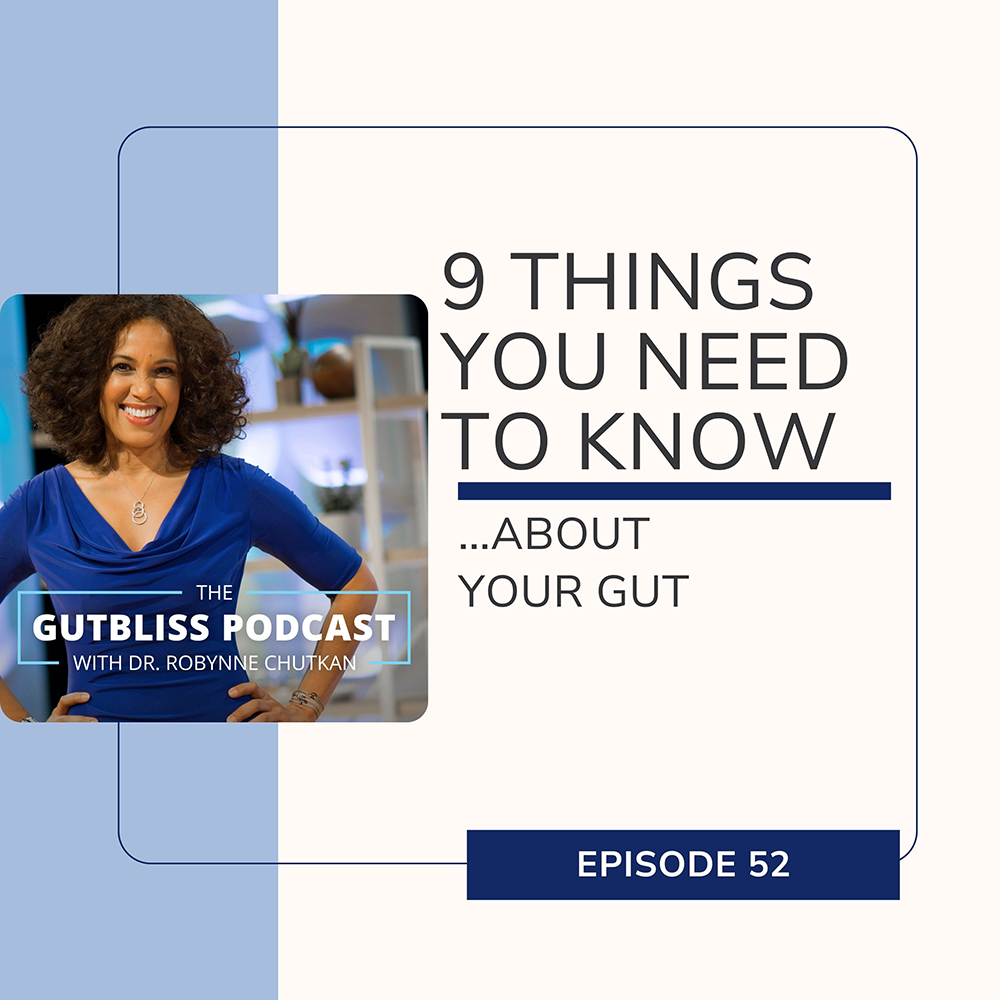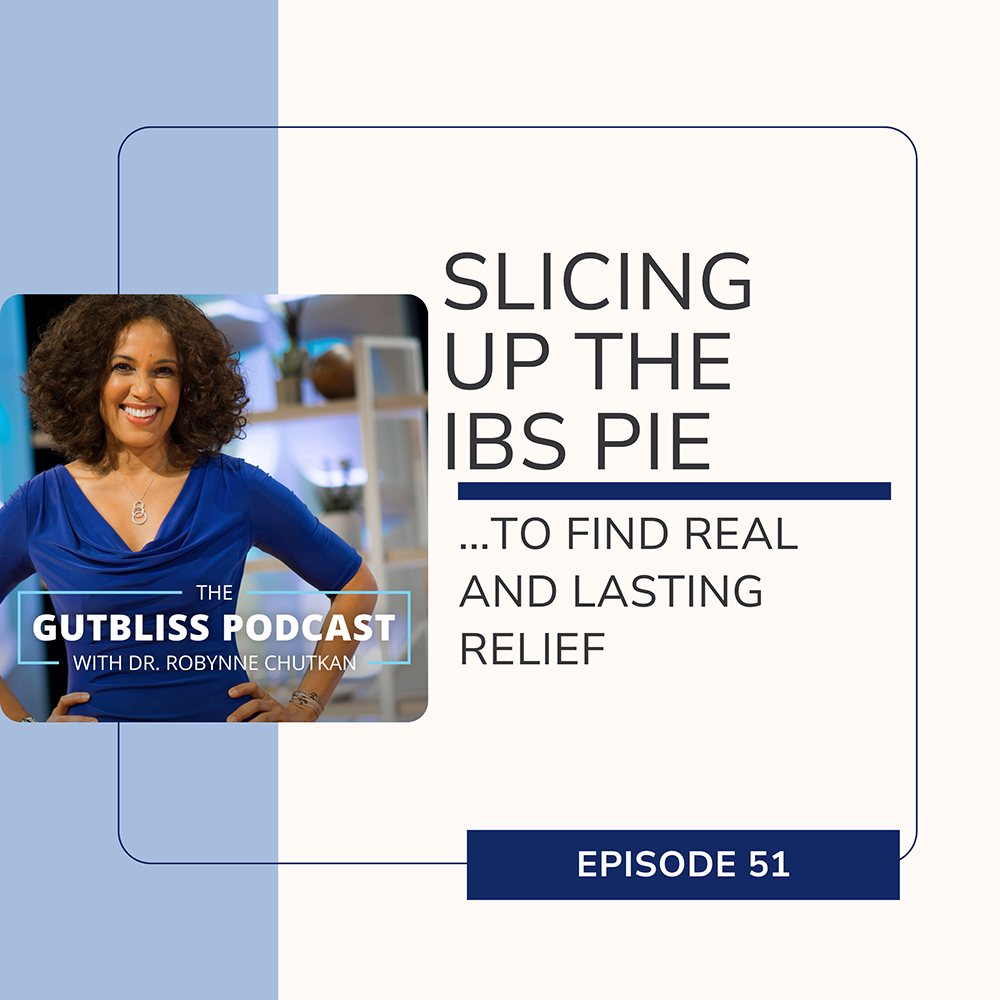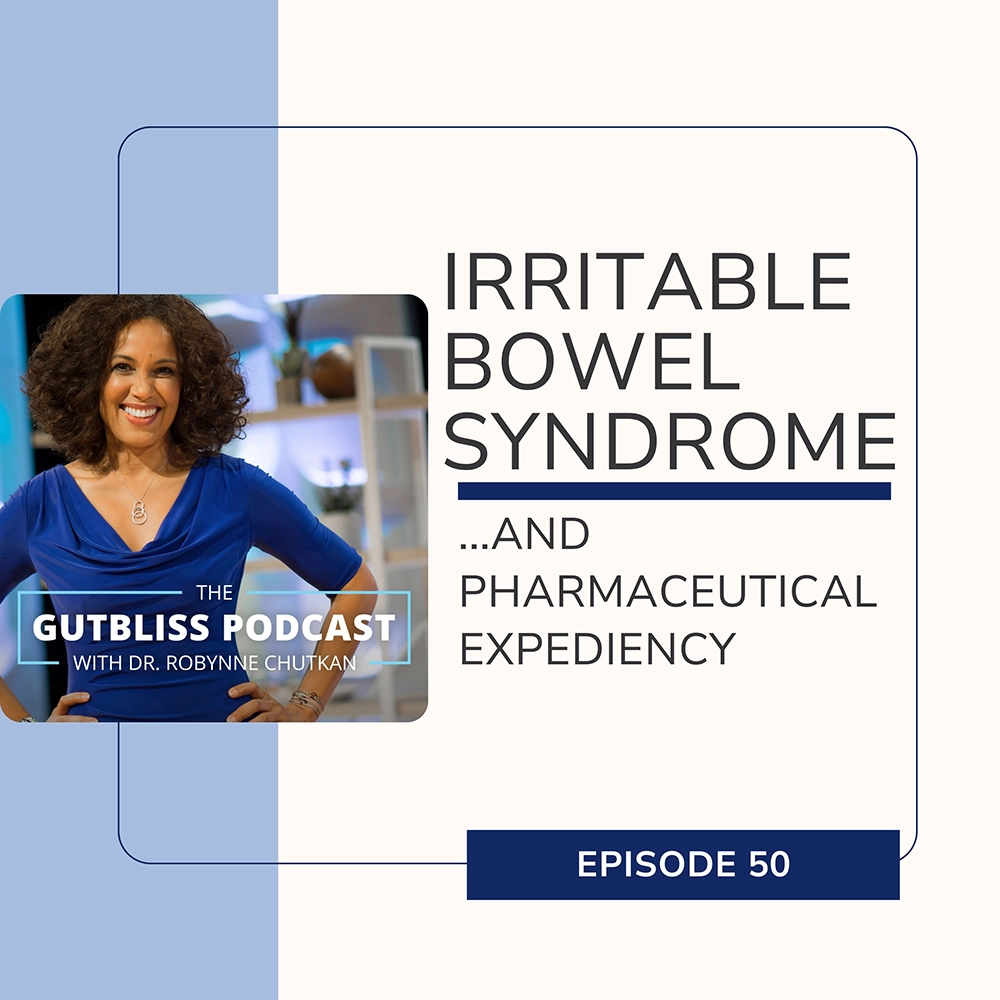What to do about reflux symptoms at night; fecal staining in your underwear; and a pulsatile abdominal mass. You’ve got questions – I’ve got answers on the 1st Gutbliss Podcast listener Q&A. If you have a question or a gut health story that you’d like to share, I would love to hear from you. You can reach me through the contact page at Gutbliss.com.
Thank you for being a part of our community! For the latest in digestive wellness go to https://gutbliss.com/ and follow us on Instagram for more gut health info.
What to do about reflux symptoms at night; skid marks in your underwear; and a pulsatile abdominal mass. You’ve got questions, I’ve got answers on the 1st Gutbliss Podcast listener Q&A.
On today’s show I’m going to be answering 3 questions from our listeners that I’m really excited to dive into. If you have a question or a gut health story that you’d like to share, I would love to hear from you. You can reach me through the contact page at Gutbliss.com.
The first question is from Albert: I started having acid reflux about 6 months ago. My symptoms got a lot better when I quit coffee – I was drinking 2-3 cups daily – but I still sometimes get symptoms at night and I’m not sure what to do.
Reflux is NOT caused by overproduction of acid – 99.9% of people with reflux have normal acid levels. Overproduction of acid is a rare disease called Zollinger-Ellison syndrome (ZE for short) that affects about 1 in a million people. So if reflux isn’t due to overproduction of acid, what causes it? It’s caused by inappropriate opening of the lower esophageal sphincter or LES. What causes the LES to open inappropriately?
o Caffeine, alcohol, smoking, chocolate
o High fat food
o Overfilling the stomach
o Late night eating
It sounds like Albert already has his caffeine intake in check, but I suspect his night time symptoms may be due to a combination of eating his largest meal at night, and probably eating too late. I would advise him to create a curfew for his last meal and the best rule of thumb is to try not to eat or drink anything after the sun sets. Now I know that can be challenging in the winter because depending on what part of the world you live in, it may be pitch black at 5:00. But remember that peristalsis in your GI tract – those muscular contractions that move things through – is tied to the light, dark cycle; something called the circadian rhythm. If you are eating after dark when your GI tract has essentially gone to bed, the food is going to sit there in your stomach for much longer than it normally would and potentially back up into your esophagus and cause reflux.
I would also advise Albert to try and eat his largest meal earlier in the day – ideally at lunchtime, and to have a light dinner (maybe soup or a salad). And the last thing I’d tell him is to pay close attention to portion size at night. The exact same meal that you’ll tolerate with no problems at one or two or three o’clock in the day, will likely cause reflux symptoms if you’re eating it at 8 or 9:00 PM. We are designed to eat and digest our largest meal in the middle of the day or in the morning when we actually need those calories for all the activities we’re going to be doing during daylight hours. We’re not really designed to take in those calories at night when we’re resting. It’s much easier to change your habits than to fight your physiology.
Our 2nd question is from someone who did not want me to use their name, which is totally fine. And the question is: This is very embarrassing but I’m seeing a smearing of stool in my underwear most days and I’m not sure what’s causing it. I have a bowel movement almost every morning, although I usually have to strain a little to get it all out, and I try to do a good job cleaning up, but at night when I take a shower I notice that I frequently have staining in my underwear.
Fecal staining caused by seepage of stool into the underwear – what we sometimes call “skid marks” is actually quite common and it is a sign of incomplete evacuation, meaning your rectum is not fully emptying when you have a bowel movement. And of course, the rectum is the very end of your colon – and that’s where your stool is stored before it comes out. In order to have a bowel movement, various muscles in your pelvic floor – including your internal and external anal sphincter muscles – have to coordinate to release the stool. And sometimes that coordination is a bit off, for example, you may think you’re pushing the stool out when you’re trying to have a bowel movement, but in reality you’re actually clenching your pelvic muscles because you’re stressed or feeling anxious. And here’s the thing: your pelvic muscles have to relax in order for you to have a successful BM, and that can sometimes be hard to accomplish when you’re feeling tense. Clenching those pelvic muscles when the stool is trying to come out means that you’re literally going to cut off the stool before it can all come out – and you’re going to end up leaving some behind, which can seep out later in the day and cause fecal staining. Pelvic floor dysfunction is one of the major causes of incomplete evacuation. And if you want to learn more about that, check out episode 2 of the Gutbliss Podcast: Shy Bowel.
If you have pelvic floor dysfunction, and you are having incomplete evacuation or maybe difficulty evacuating altogether where the stool just isn’t coming out, you may need a formal evaluation and some testing. The test that we typically do is called anorectal manometry. I will definitely do a full episode on pelvic floor dysfunction, but for now, if you think that may be going on one of the things you need to focus on is really trying to relax those pelvic muscles when you are on the toilet.
The other main cause of incomplete evacuation is a BM that isn’t bulky enough to come out all in one nice big log, so instead you have to squeeze it out like toothpaste. And just like with toothpaste, there’s often that last little bit that’s left in the tube that’s really hard to get out. So it sounds like what’s happening with our listener is that after their morning bowel movement, there’s a little nubbin of stool left behind in the rectum, right down at the bottom, and that nubbin is working its way out into their underwear later in the day as their GI tract is stimulated to contract by activities like eating and movement. What you need to do in this case is to bulk up your stool to make sure that you’re having a nice large stool that comes out of your rectum without a lot of effort. You should not have to be pushing and straining, which is what happens when you have a more narrow toothpaste-like stool without a lot of bulk to it.
So how do you create this nice bulky log instead of a narrow toothpaste-like bowl movement? The secret is fiber and water. I highly recommend increasing your consumption of beans, berries, and broccoli or doing a green smoothie with lots of greens first thing in the morning. The other thing you can do to help increase your fiber intake is to add a fiber supplement like psyllium husk (and make sure it’s the kind without any artificial sweetener). Mix a heaping tablespoon of the psyllium powder in a big glass of water in the morning, so the fiber has plenty of time to get through your 30 feet of intestines. If you have it later in the evening when your GI tract is less active it can end up getting stuck and bloat you. If the fiber alone isn’t working and you’re still not having that nice bulky stool, you can try adding a little magnesium at night. And of course, you have to remember that your digestive tract is basically plumbing, and what do you need to carry the products of digestion through from the top to the bottom? You need water, plenty of water. My rule of thumb is drink at least half your body weight in ounces of water. So if you weigh 150 pounds, that’s 75 ounces. If you weigh 200 pounds, that’s 100 ounces of just plain water that is really going to help to create a nice big bulky stool that evacuates completely and doesn’t leave any skid marks.
Our third and final question is from Jessica, who says: I feel a pulsing mass above my belly button and am concerned it could be a tumor.
You may be able to feel your abdominal aorta, the main blood vessel that delivers blood to the body, especially if you’re relatively slender. The aorta is a large artery that runs through the stomach area. People may feel pulsing from the abdominal aorta when something increases blood flow in the area. This may occur:
· During pregnancy
· When lying down
· When pressing on the stomach
· When eating
So that is almost certainly what Jessica is feeling above her belly button. But I want to point out that a pulsatile mass in that area can also be a sign of an abdominal aortic aneurysm (sometimes referred to as a AAA or “triple A” in medicine). An abdominal aortic aneurysm is an enlargement of the aorta, and it’s most common in older men and smokers. A triple A is serious and can be life-threatening if it bursts. As it grows, some people may notice a pulsating feeling near the belly button but is usually has accompanying symptoms like pain in your back, or abdomen, or side. The pain may be severe, sudden, persistent, or constant. It may spread to the groin, buttocks, or legs and pain may be a sign that the AAA is getting ready to rupture – which of course is a life threatening emergency. Additional symptoms can include passing out, clammy skin, dizziness, nausea and vomiting, rapid heart rate, and a low BP.
So the advice I would give Jessica is that this is almost certainly just your abdominal aorta that you’re feeling, because you are not describing any of those other accompanying red flag symptoms. But if you have any concerns or develop any accompanying worrisome symptoms, you should talk to your doctor and ask about an abdominal ultrasound to check.
I want to leave you with three takeaways from this listener Q&A:
1. If you are suffering with acid reflux, think about eating a lighter, earlier dinner.
2. If you are having fecal staining or seepage in your underwear, make sure that you are bulking your stool with a lot of fiber and also that you are relaxing those pelvic muscles so that you can have complete evacuation and not leave any stool behind in the rectum that can seep out later.
3. If you feel a pulse above your belly button in the middle of your abdominal area, that is likely your abdominal aorta you are feeling. It’s the largest artery in your body and because it’s an artery it does have a pulse. But if you have any accompanying symptoms with that pulse especially pain, you should definitely get that checked out to make sure you don’t have an abdominal aortic aneurysm.
So that’s it for this edition of the Gutbliss Podcast – Q&A edition. My goal is to provide content that matters to you, so please, reach out with your questions. I’d love to hear from you! You can DM me on Instagram @Gutbliss or use the contact page on my website at Gutbliss.com. And what would be really great is if you sent your question as an audio file with you asking it yourself, and then I’ll play it on the podcast. You can use your name or not, whatever you’re comfortable with, but it would be great for people to hear you asking the question in your own voice.
Coming up next week on the Gutbliss podcast: the gallbladder. Should it stay or should it go? Everything you need to know if you are contemplating gallbladder surgery or if your gallbladder is misbehaving.









